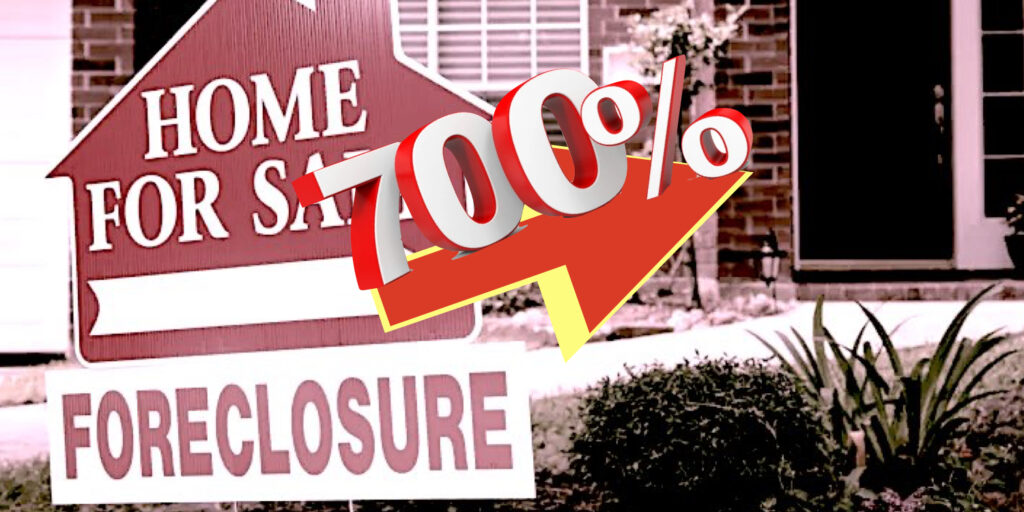What does a 700% surge in foreclosure starts mean for HECM lending?
Foreclosure starts are up 702% from December to January with 32,900 loans. What does this mean for the housing market and reverse mortgage lenders?
[read more]
We are living in a time where economic fundamentals have fallen by the wayside as the housing hysteria has fueled record gains in home prices. While homeowners may be relishing their newfound housing wealth they should be mindful that none of their equity is real until it’s separated from the home either through a refinance or sale and that housing wealth can disappear quickly. Perhaps older homeowners may want to reconsider taking a reverse mortgage after they see unsettling statistics.
First is a very important metric, the home price to income ratio. Historically a home in the U.S. would cost approximately 5 times a household’s yearly income. In the years leading up to the housing bubble and economic crash of 2008 the median income ratio to home value surged from 4 times a household’s annual income to a factor of 7. Today, similar to the run-up to the 2008 crash median home prices are equal to seven times a household’s annual income. This ratio is heavily influenced by interest rates. Lower rates increase the affordability and home prices buyers can afford.
The second factor that should cause concern is foreclosure starts. Black Knight reports a 702% increase in foreclosure starts from December to January with 32,900 loans referred for foreclosure. While a seven-fold increase is unsettling the number of foreclosure starts is not particularly novel as 42,800 loans were referred to foreclosure in January 2020. The good news is there are 9% fewer borrowers who are seriously delinquent on their loans. The bad news is we still have a backlog of post-forbearance loans still in forbearance and over 379,000 loans that have exited mitigation but still are delinquent. Should a glut of foreclosures come on the market they’ll likely arrive in bunches. This means local values won’t take an immediate hit until foreclosures start to represent the typical market in a given area.
Not all agree a housing crash is likely. One is Federal Reserve Governor Christopher Waller. “My short answer is that unlike the housing bubble and crash of the mid-2000s, the recent increase seems to be sustained by the substantive supply and demand issues,” said Waller and “not by excessive leverage, looser underwriting standards or financial speculation.”. Keep in mind that the Fed told us a few months ago that inflation was merely transitory and was caught flat-footed in the months leading up to the 2008 housing crash.
And speaking of failing to read the tea leaves, the nation’s largest real estate research agency’s housing outlooks diverge significantly. Zillow projects annual home price growth will surge to 22% by May and will average 17% by January 2023. CoreLogic is more subdued expecting home prices to rise only 3.5% between January 2022 and January 2023. One question is what happens when housing buyers disappear? If institutional buyers begin to dump homes then prices will fall. How far, no one knows.
In the end, the present housing crisis we face is one of supply and affordability, each of which stands to prop us older homeowners’ present values for the time being. Until they’re actually is a great reset in the housing market or a flood of foreclosure accumulated housing wealth remains one of the most under-utilized and appreciated means of helping retirees simultaneously soften the blow of inflation while improving cash flow. The question is how effectively will originators shift from refinances to first-time borrowers before interest rate hikes diminish the benefit?
Resources:
Black Knight: Black Knight’s first look at January mortgage data
Longtermtrends: Home Price to Income Ratio
[/read]






5 Comments
Nice commentary Shannon.
Thank you for your comments and analysis, Shannon
You’re most welcome Sue. Good to hear from you.
Helps me keep up
It is great to become aware of such issues before they become trends and catalysts driving HPAs.